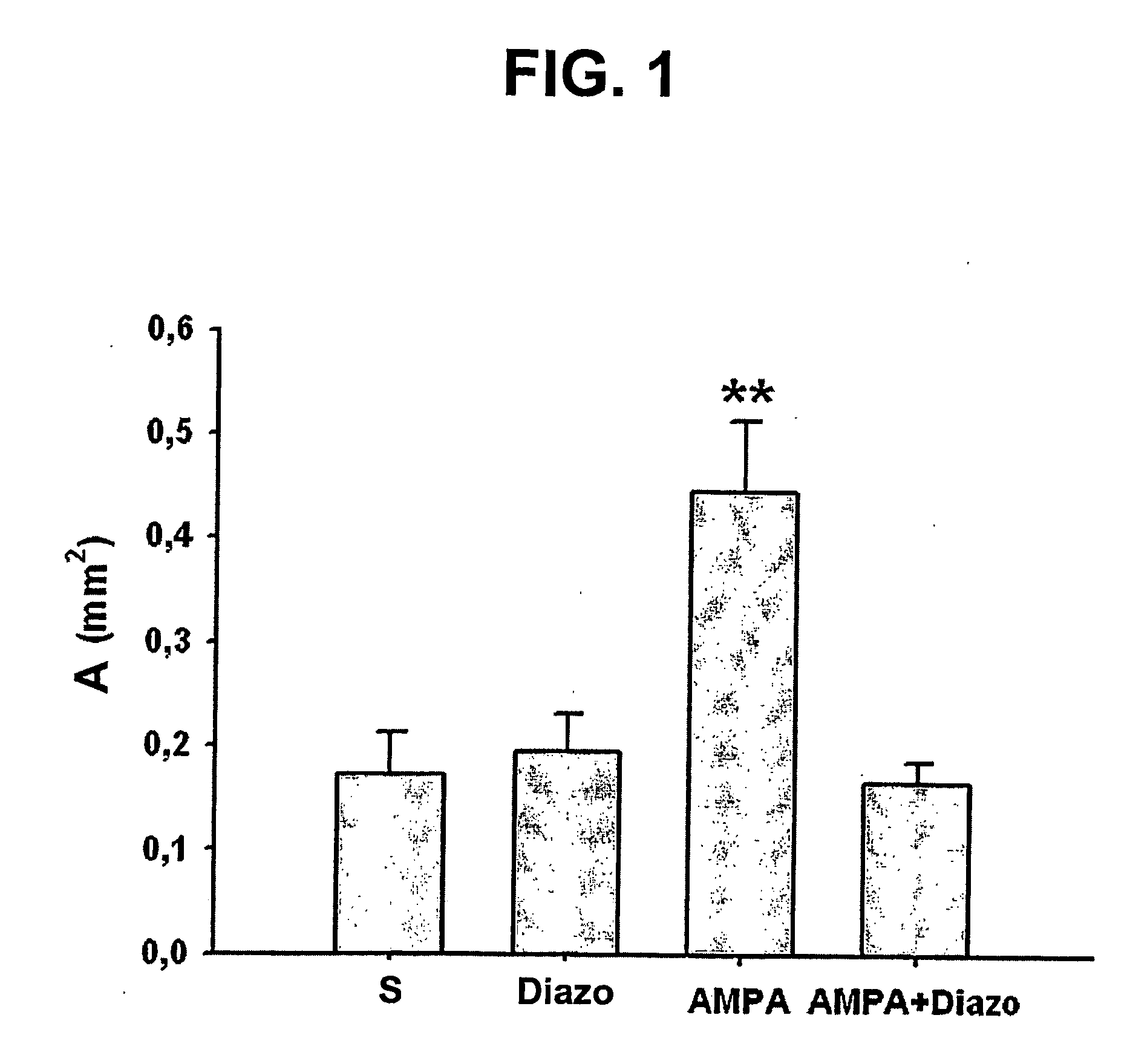Compounds for the Treatment of Inflammation of the Central Nervous System
a central nervous system and inflammation technology, applied in the field of compound for the treatment of inflammation of the central nervous system, can solve the problems of shortening the life of neurons, cns chronic inflammation treatment is characterized by non-specific action and important undesirable side effects, and several unwanted severe side effects, and achieves accurate spatial localization
- Summary
- Abstract
- Description
- Claims
- Application Information
AI Technical Summary
Problems solved by technology
Method used
Image
Examples
Embodiment Construction
Diazoxide Reduces Microglial Reaction in Rat Hippocampal Lesion
[0026] This model relies on the acute stereotaxic over-activation of rat glutamate hippocampal receptors that results in a neurodegenerative process characterized by a neuronal loss with astroglial and microglial reactions (cf. F. Bernal et al., Hippocampus 2000, vol. 10, pp. 296-304; F. Bernal et al., Exp. Neurol. 2000, vol. 161, pp. 686-95). In this neurodegenerative model rats were anaesthetized with equithesin (a mixture of chloral hydrate and pentobarbital sodium; 0.3 ml / 100 g body weight, i.p.) and placed on a Kopf stereotaxic frame with the incisor bar set at −3.3 mm. Intracerebral injections aimed at the dorsal hippocampus were performed at 3.3 mm caudal to bregma, 2.2 mm lateral and 2.9 mm ventral from dura (cf. G. Paxinos et al., “The rat brain in stereotaxic coordinates”, Sydney: Academic Press 1986). A volume of 0.5 μl was injected over a period of 5 min.
[0027] Four different groups of rats received two in...
PUM
| Property | Measurement | Unit |
|---|---|---|
| volume | aaaaa | aaaaa |
| flow rate | aaaaa | aaaaa |
| pH | aaaaa | aaaaa |
Abstract
Description
Claims
Application Information
 Login to View More
Login to View More - R&D
- Intellectual Property
- Life Sciences
- Materials
- Tech Scout
- Unparalleled Data Quality
- Higher Quality Content
- 60% Fewer Hallucinations
Browse by: Latest US Patents, China's latest patents, Technical Efficacy Thesaurus, Application Domain, Technology Topic, Popular Technical Reports.
© 2025 PatSnap. All rights reserved.Legal|Privacy policy|Modern Slavery Act Transparency Statement|Sitemap|About US| Contact US: help@patsnap.com

